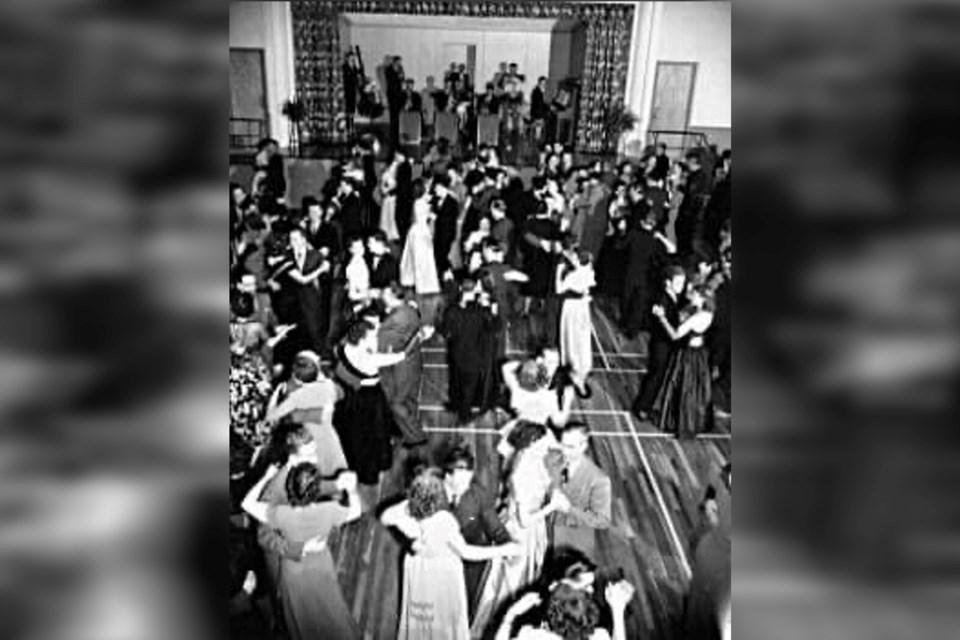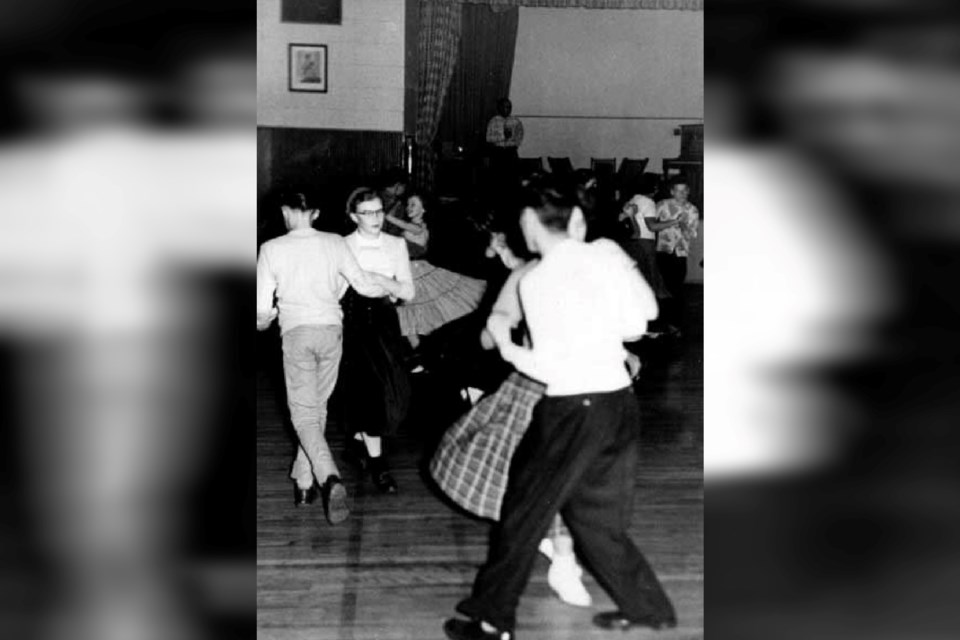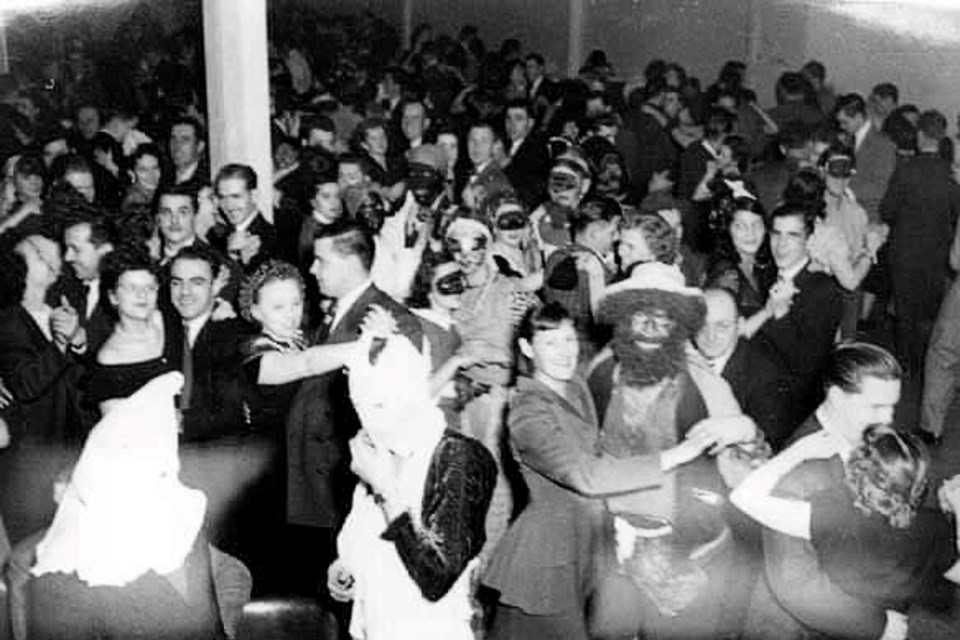Through this series I try to summarize the present situation of local culture. My account may miss aspects in dance, literature, visual arts, historical writing, photography, public art and music. Additions and corrections are welcome.
I start with dance, primarily as done in couples. Much research demonstrates the long- and short-term benefits (for memory, balance, and stamina), especially for seniors. Fortunately, Sudbury offers many options to dance and to learn different styles.
Dancing generally requires a floor, with wooden ones best for gliding and resonance. Sudbury has many: at ethnic, union, legion, service club, and church halls. Many ethnic groups, including the Croatians, Poles or Finns, built halls to gather their people and to share cultural activities.
As some groups declined, their halls were transformed.
The Finnish Hall on Antwerp Street disappeared. One Ukrainian hall has become the home of the police association, and the Copper Cliff Italian Hall closed, but was purchased by the owners of Sukhdev, an Indian food restaurant with several locations in the area.
Already underway, Knox Church, on both levels, has been converted into a space for special events and concerts, which may include show dance, to be distinguished from social dance, the latter referring to fun participation and the former meaning mainly watching others.
One of the largest post-war Sudbury gathering places, the Mine Mill Hall, became the Navy League Hall and is now the Sudbury Events Centre. In its heyday in the 1950s, that hall hosted Saturday dances with bouncers and strict rules about dress and decorum.
Elderly Sudbury women remember being told to wear their best dress. Mine Mill had three halls in the Sudbury area, and all held regular dances, including “sock hops” for teens. The union competed with the dominant mining company Inco, which had built halls in Copper Cliff (mostly for management), in Sudbury and Garson. In the latter two, company employees paid fees to access various sports facilities, as well as the large dance halls.
Later, to compete with Mine Mill, the Steelworkers bought one on Frood Road. After that hall fell to arson (a fate that befell another popular dance spot of the 1950-60s, the Silver Beach Tavern), the Steelworkers converted a grocery store on Brady Street into a large hall. There, friends and I experienced one of our best New Year’s Eve dinner dances, ringing in 2024. It has become an annual event, as was the New Year’s dance at the Polish Combatants’ Hall for decades.

Sudbury old-timers reminisce about the Caruso Club and the Alouette Club in the Flour Mill. Both were popular venues. One, now in his 90s, explained the weekly pattern of where the action was.
“Teen Town on Wednesday night [which was] in the basement of the Anglican Church on Larch St. Or the YMCA. Danceland on Fridays and Saturday nights to Jack Smith’s Band. [Or] In the Crystal Palace…On Sunday it was the Caruso Club…we did this every week for years.” Others remember sock hops at St. Charles College.
Sudbury still boasts many dance clubs. At present, the largest club is the Golden Age Club, recently renamed as 55+ Club. Its home is in the Caruso Club, one of the largest Sudbury halls with a good floor. About 200 members attend the third Wednesday-of-every-month dinner dances. The ballroom music varies from live to computer generated.
That hall, with a smaller lower-level floor, also hosts special family events, but is most known for the annual Italian Festival. Fancier food is served at its annual dinner dances honouring regional Italian heritages, including Marche and Calabresi.
The Polish Combatants’ Hall has ballroom dances, “Shall we Dance”, monthly about eight times a year, hosted by the Auberts or friends. Line dancing is offered before the ballroom and Latin music. Since many of the dancers have taken lessons, some observe how well the couples execute the taught moves. But most are there for fun and I have yet to see anyone with two left feet.
The Legion Halls are very popular dance places. In Minnow Lake (Weller Street), every Tuesday afternoon Victor John and Jean Dubreill entertain with jives and foxtrots. The last Tuesday of the month is western themed, and many people wear boots and checkered shirts. On Thursday early afternoon, the Hilltoppers play many foxtrots, waltzes, some chachas, tangos and waltzes. This 15-piece band can simply be listened to while toe-tapping. The Long Lake Legion Hall offers different bands or individuals on Friday nights and occasionally the Minnow Lake Legion offers Saturday night dances. The YMCA Parkside has Friday lunch dances.
Where can you learn to dance? Several schools of dance aid the skill level of the participants at the above listed halls and clubs. Sudbury has many options due to the many certified dance instructors. At the Moose Hall, Ballroom Dance Studios lessons are led by Dennis Harasymchuk; at the Parkside, Jan Fregonese presides; the Academy of Ballroom Dance features salsa; Dance Evolution serves young and old; Zoi Monroy teaches Latin styles. There are others, but not well known to me.
The Moose Hall is home to Argentine Tango Friday nights. Sometimes professionals are brought in for workshops. Zoi Monroy also offers Latin nights and street festival events during summer, which tend towards salsa, bachata, cha-cha and merengue. She also organizes the annual Northern Latin Dance Congress with workshops during the day, and performances and social dancing in the evening.
Sudbury Swing Dance seeks to build community spirit while fostering swing styles. The group offers workshops, classes and social events at the Moose Hall. All the above groups offer websites with further details.
Many specialized dance groups or events exist. Earthdancers, who combine individual modern dance with community commitment, have held shows since 1989.The African, Chinese, Greek, Irish, Indian and Ukrainian communities highlight their traditional dances at annual festivals.

Are there others? Certainly, many dance schools teach children and youth ballet, modern, hip hop, jazz or classic forms. Sudbury has a long tradition in dance, including ballet classes organized by Mine Mill and by Tina Pel, some of whose students ended in the National Ballet.
Special dance events include fundraisers such as the annual Easter Seals dancing with local “stars.” An amateur is paired with a professional or highly competent dancer. These are show dances not to be confused with social dance for fun, which is what I highlight here.
Dancing requires music and Sudbury has many talented musicians. Among the best is Iona Reed, a world champion accordion player who accompanies the Hilltoppers every Thursday. Since opinions differ as to who is good and who is mediocre, I will only say that in all the halls mentioned, the variety and competence of the musicians can satisfy most tastes.
Hotels and restaurants such as Cousin Vinny’s, Daventry, Fion McCools, Grumblers, the National (formerly The Nash) or the Northbury offer limited space, but dancers do get up when local bands or singers such as Andy Lowe strike a tune. A bit more space exists at the Place des Arts Bistro where jazz on Wednesdays offers danceable fare.
Teen dances, like square dancing, have lost their popularity. Zigs, a gay community gathering point, used to offer teen dances and old timers remember the lessons and graduation dances at high school gyms. About 25 years ago, Latin styles gained interest and have continued to grow in popularity.
In summer, the gazebo concerts at Bell Park have diverse music and some of it is quite danceable. However, like at the Northern Lights Festival Boréal held annually for three days during the first week of July, the concrete and grass make one miss the wooden-floor halls. That festival’s early spring offshoot, Bloom, offers much music but few dance opportunities, similar to the arts festivals presented by the Sudbury Performance Group.
An annual dance timed with the summer solstice is at Beaver Lake where the Finns present traditional food and recruit Iona Reed. In the former towns around the city’s core, the Colonial Inn in Coniston, and the Legion Hall and Club 100 in Chelmsford host occasional dances. I am probably missing some as I waltz around the region.
So, get up, grab your partner and keep time together.
Dr. Dieter K. Buse is professor emeritus, History, Laurentian University. He is writing a series of columns on local culture and history on behalf of the Sudbury Arts Council.
